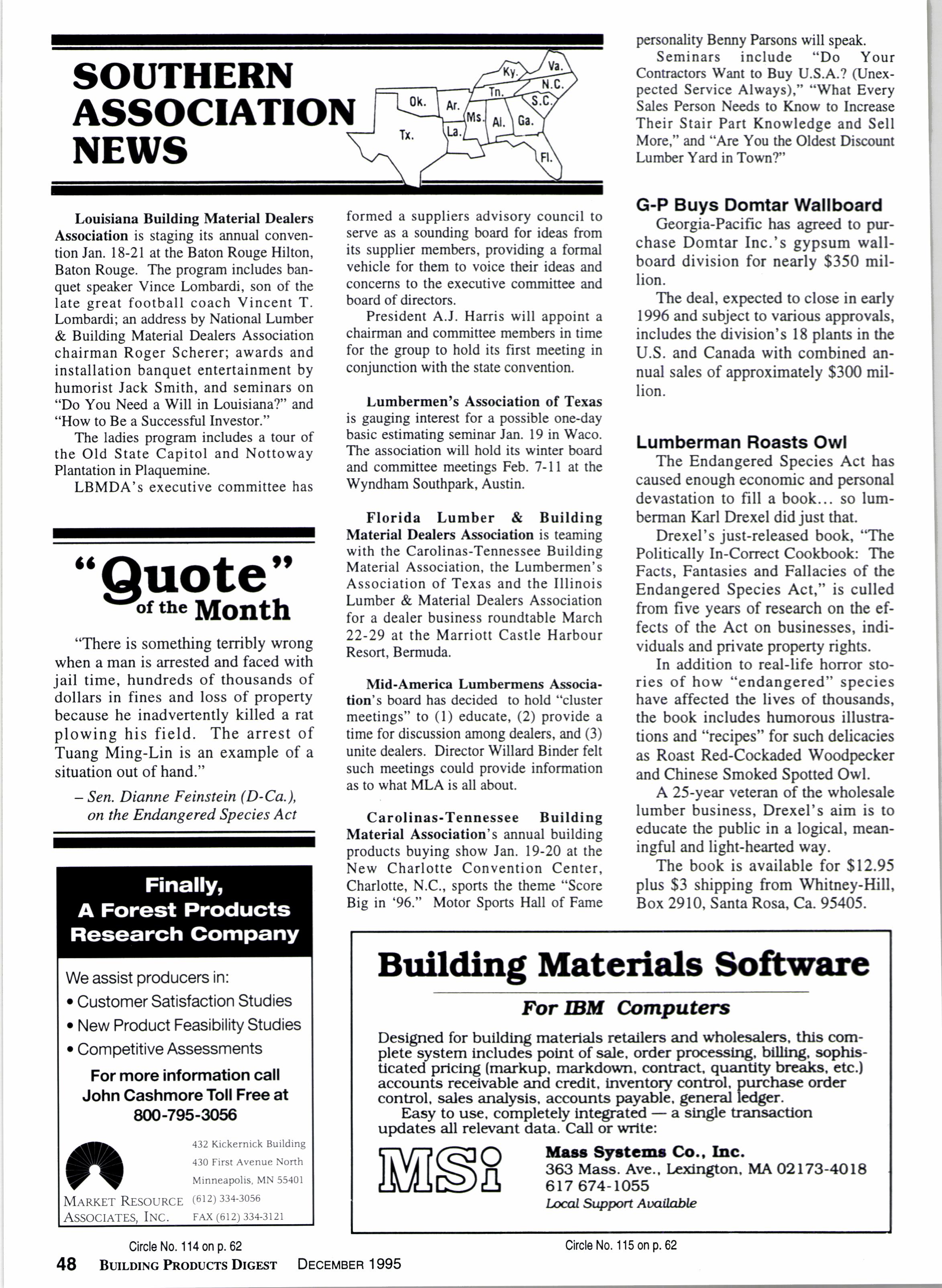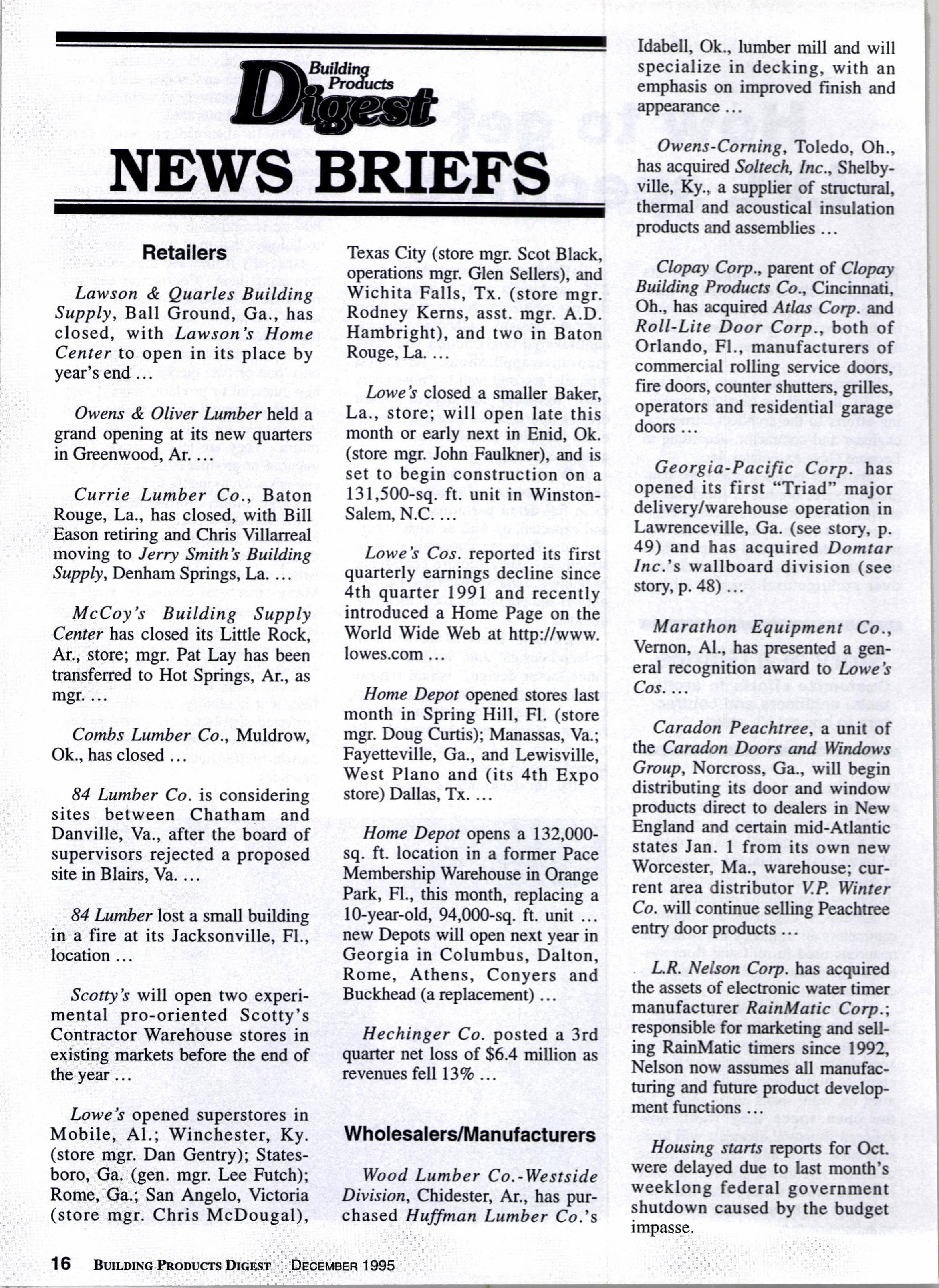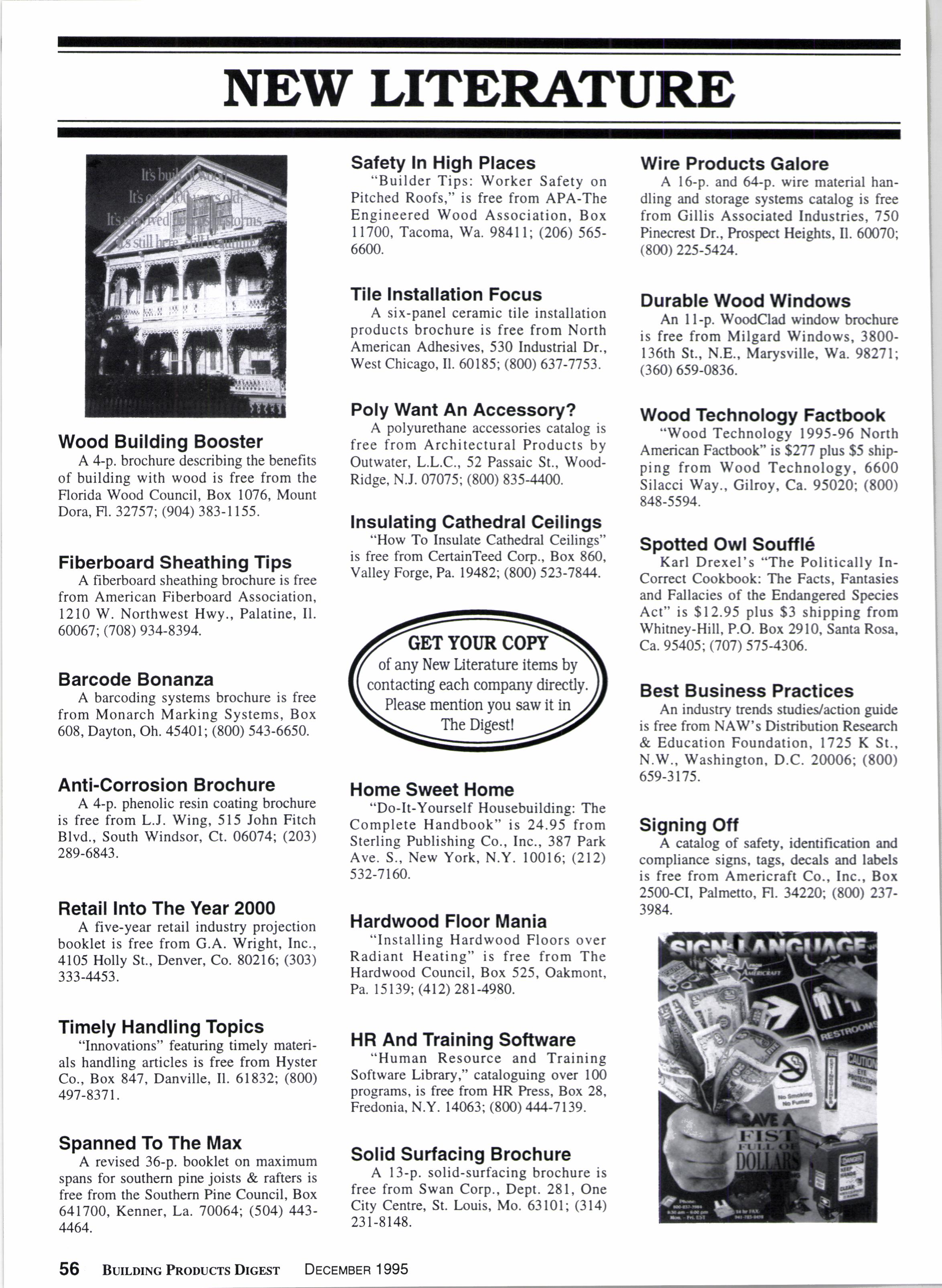
1 minute read
LETTERS
Torchjob
I would like to address the article ("Fireproof Wood: What a Concept," Nov. p. l2). First and foremost, I would like to point out that there is no such thing as "fireproof'wood; might I suggest that the term "flame resistant" wood would have been a more accurate description of the FRTW available on the market today.
As a consultant to a manufacturer of a three-in-one product (wood preserver, insect repellent and flame retardant), I am baffled by the continued industry-wide support of "pressure treated" wood. Enclosed please find two reports by the U.S. Dept. of Agriculture Forest Service describing in detail the problems associated with this process ("thermally degraded plywood roof sheathing"). These studies negate even the most modest claims of pressure treated wood enthusiasts.
As you may or may not be aware, the major corporations involved in the "wood treatment" industry have successfully held a monopoly over the market since its inception and are now faced with the longterm consequences of their products' inherent degradation of wood over time. By setting the standards/requirements enforced by ASTM, these entities have virtually eliminated any opportunity for new technology to penetrate the industry. Rather than addressing the proven defects of the existing treatment methods or working to find a solution in order to remedy the situation, they seem to continue to uphold the self-defeating "our way or the highway" attitude.
There are alternatives. For example, has anyone considered the possibility of a spray-on application which will not degrade the wood? Ofcourse not. Due to the present code structure, there is no spray-on test method currently in place to validate this as an "accepted and approved" application. Members of the fire retardant community must, therefore, go to great lengths (and expense) to now develop new standards in order to have a product recognized as an effective "spray-on" or alternate fire retardanVwood preserver.
Considering that the cost of this "problem" is estimated to exceed $2 billion, I feel the Big Boys should neither ignore nor neglect their responsibility in remedying the situation. In the meantime. the focus should be on those who are devoting their efforts to offering new and innovative technology to the industry in order to reverse the negative, downward spiral associated with 'pressure treated" wood.
Christina Cuddy
1977 Coldwater Canyon Dr. Beverly Hills, Ca. 90210
Durable Vinyl Siding
Transitions vinyl siding by OwensCorning reportedly will not dent or rot, doesn't need painting and can be cleaned with a garden hose.









